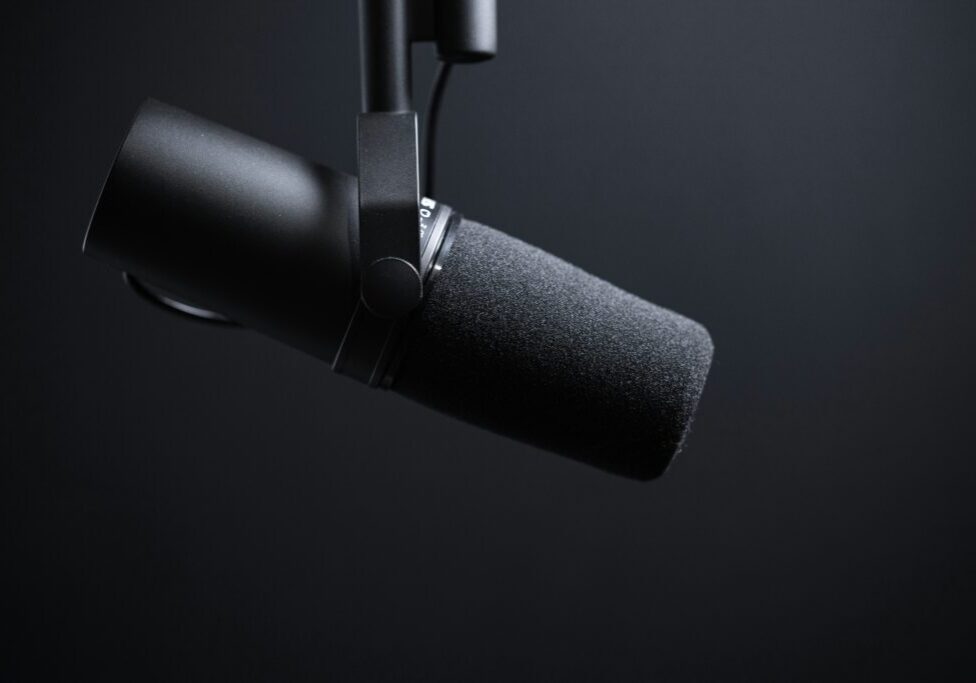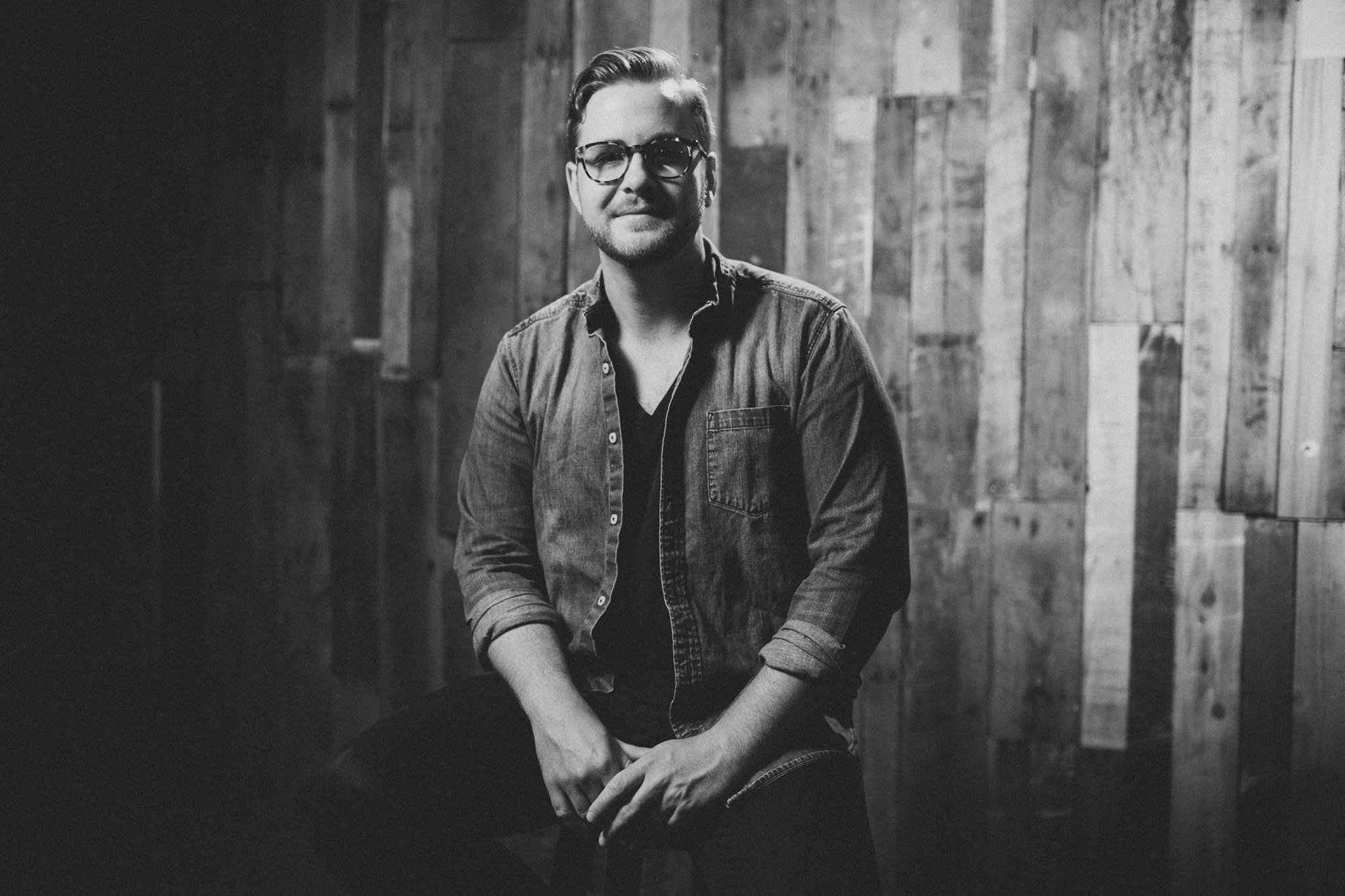Despite being one of the earliest examples of a microphone in terms of makeup, dynamic mics are still as popular today as ever.
These simple and rugged microphones are easily recognizable in their live setting applications, though they come in all shapes and sizes.
Not only that, these mics can and have been used in the studio, both for musicians and broadcasters, as well as for podcasters and streamers.
These microphones are incredibly versatile, and they’re perfect both for the starting musician as well as for the experienced veteran.
The way they work is pretty simple as well (though it may sound complex to the uninitiated).
When dynamic microphones register sound waves (such as from a voice or an instrument), a tiny piece of plastic or polyester film (called the diaphragm) vibrates within the mic.
This diaphragm is held between two metal coils. Once it begins moving/vibrating, it mimics the pattern of the sound wave, which is then boosted and sent through the cable the mic is attached to.
After traveling through the cable and into an amp or recording device, this mimicked and boosted sound wave can be heard again!
There are plenty of other mics out there that work using slightly different methods, each with their own use in the studio and for live sessions.
However, because dynamic microphones have such a simple makeup, they’re often the perfect pick for performing live.
Their sturdy build allows them to pick up loud noises without the sound becoming harsh or distorted.
The microphones themselves also won’t break, so they can be used in the studio to mic up drums or even electric guitar amps.
Top 5 Best Dynamic Microphones for Beginners
Picking the right dynamic mic isn’t always easy. After all, you want to make sure you’re spending your money on a microphone that’ll give you both quality and durability.
The options out there are nearly endless, but as a musician myself, I’ve found some excellent dynamic microphones for both the studio musician and live performer.
1. Shure SM48
Whether this is your first live gig or your 100th, the Shure SM48 is the industry standard when it comes to dynamic mics.
Not only that, but this powerful microphone is super affordable, meaning you won’t have to break the bank for even a few of them.
Its shock-mounted cartridge and steel-mesh grille make it a tough microphone to have on the go. Though it’s always important to transport your mics in a case, you can rest a little easier knowing the SM48 can take a beating.
It’s also super easy to set up and use, making it perfect for live musicians and podcasters alike.
Pros
- Incredibly versatile
- Affordable
- Durable
Cons
- Won’t have many applications in the studio
- Levels may need to be adjusted to boost the signal
2. Sennheiser Professional MD 421-II
Miking up drums and electric guitar amps isn’t always the easiest task for many new musicians.
While most dynamic mics can handle the strength of these sounds, having a solid one in place can help translate those otherwise intense vibrations more cleanly when performing live or in the studio.
For these applications, I definitely recommend the Sennheiser Professional MD 421-II.
It’s a more expensive microphone than the one I just recommended, but its usefulness is hard to deny, and it definitely rounds out a full-band sound.
If you’ve been gigging for a while now or need the perfect mic to record your drums or amp, check this one out.
Pros
- Large diaphragm makes it perfect for drums and amps
- Useful for large bands
- Great for group vocals
Cons
- Expensive
- Not as useful for individual vocalists
3. Electro-Voice RE20
While this microphone is definitely meant for broadcasters and podcasters, that’s not to say musicians won’t fall in love with this heavy-duty dynamic mic.
Its sturdy build picks up the low end incredibly well, meaning recordings will be rich and nuanced and have all the warmth recognizable to radio.
For musicians with a low singing voice or when recording guitar and other acoustic instrumentation, this dynamic microphone is an excellent choice.
Pros
- Very high quality
- Deep, warm sound
- Durably built
Cons
- Very large
- Expensive
- Primarily intended for broadcast
4. Rode M1-S
Another excellent option for live performances is the Rode M1-S, which features a sturdy build perfect for gigging at multiple venues.
It works particularly well for vocals, but it can be used in other applications as well.
This microphone is a favorite of many. If you’re looking for a step up from the Shure SM48 (and willing to spend a bit more for it), this should be your go-to.
Pros
- Excellent for live performances
- Sturdy build
- Perfect for musicians looking to upgrade their gear
Cons
- More expensive when compared to similar microphones
- Some reported quality control issues with the ON/OFF switch
5. Amazon Basics Dynamic Microphone
Finally, if you’re operating with a limited budget or need a gentle introduction to the world of dynamic microphones, you can never go wrong with Amazon Basics.
This simple little dynamic microphone is excellent for the occasional live performance. While not the best or sturdiest microphone out there, it’s still a powerful tool when mixed properly.
Try this one out if you’re in a pinch or new to the world of live performances and don’t want to overcommit to a more expensive option.
Pros
- Affordable
- Very easy to use
- Great entry option
Cons
- Very low range
- Not very durable
Dynamic microphones are an excellent choice when performing live.
They’ve got a wide range of applications as well, so if you want to try podcasting, streaming, or even recording alongside your live gigs, give these versatile tools a try.
If you’re interested in learning more about the larger family of microphones, check out my complete guide on the topic.
If you’ve already got your mics picked out and you’re ready to begin writing and performing some new music, take a look at my free guide, which covers everything you need to know about writing a song.
I hope these resources help. Happy songwriting!


